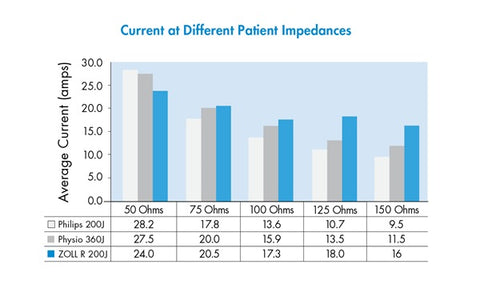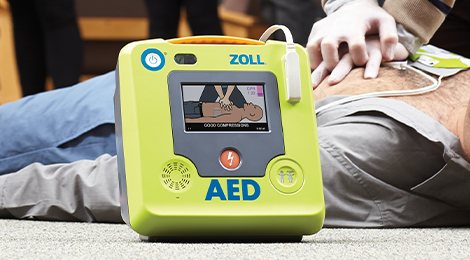Shopping for a new defibrillator and don't know where to start?
When it comes to choosing a defibrillator, it's important to understand the key features that each brand and model offer. These differences can impact how you or a bystander use the device and can determine the outcome of patient suffering from sudden cardiac arrest.
All defibrillators have key features including the type of operation mode, the energy discharge mode and the amount discharged, default suitability for adult and/paediatric patients, warranty periods, protection ratings from environmental elements and self check frequencies.
Operating Mode: Semi-Automatic vs. Automatic
One of the primary differences between defibrillator models is the operating mode. Some defibrillators are semi-automatic, meaning they require the user to manually deliver the shock after analyzing the patient's heart rhythm by pressing a button. On the other hand, automatic defibrillators deliver the shock if the device detects a shockable rhythm. The choice between these modes depends on the user's preference and possibly, their level of training.
Semi-automatic defibrillators feature a large button that illuminates at the appropriate moment. When instructed by the defibrillator the user can check to ensure the patient is clear of rescuers, push the button and deliver the shock. This mode can be favoured by users familiar with the use of AED as it allows more control over the defibrillation process. Additionally the shock may be delivered faster, enabling the rescuers to return to CPR sooner.
Automatic defibrillators will deliver a shock if a shockable rhythm is detect. The device will announce a shockable rhythm has been detected and provide a countdown until the shock is delivered. Once the shock has been delivered the devices will analyse for a shockable rhythm and instruct whether to restart CPR. This mode is ideal for public areas as non-trained users may hesitate pushing the button, featured on semi-automatic devices, in order to deliver a shock.
Adult and/or Pediatric Patients
Another important consideration is whether the defibrillator will be in areas that may be used on paediatric patients. All external defibrillators are suitable for use on adults by default, however if you need a defibrillator suitable for paediatric patients you may need to consider how your defibrillator reduces the energy delivered.
In order to deliver a shock to a paediatric patient, the defibrillator needs to drastically reduce the energy delivered. The two common methods for this is through a built-in energy reducer, or specially designed paediatric pads which contain an energy reducer.
While some defibrillators have built-in paediatric capabilities, allowing for the delivery of lower energy shocks for children, some may require paediatric defibrillator electrodes. It's crucial to choose a defibrillator that matches the intended patient population, and ensure you have the correct accessories if required.
Energy Delivery Method
Defibrillators differ in the amount of energy they deliver, the escalating stages and the method at which the energy is delivered.
The majority of modern day AEDs will use biphasic waveforms when delivering a shock. This means that the energy discharged travels from the first electrode, through the patients heart to the second electrode, then returns to the first electrode again travelling through the patients heart. This allows the energy discharged to travel through the heart twice. Due to this methodology of transferring energy, biphasic defibrillators expose patients to a lower peak of electrical current, making them safer, with a lower risk of damaging the patients heart and surrounding organs.
Defibrillators that feature pre-programmed escalation will register if a shock was unsuccessful, and if deemed clinically appropriate and necessary, increase the energy output for subsequent shocks. Other defibrillator models may be designed to stay at a relatively flat rate, and change the joules discharged according to the impendence measured in a patient to deliver the optimal amount of current to the patients heart. The Australian Resuscitation Council recommends all external defibrillators to deliver an initial shock starting at 200J.

Zoll Australia “The Heart of the Matter: What really defibrillates the heart?” ZOLL White Paper, 2015. https://www.zoll.com/au/medical-technology/rectilinear-biphasic-technology
Warranty Periods and Environmental Protection
Warranty periods will vary among defibrillator brands and models. It's essential to consider the length and coverage of the warranty when selecting a device. Longer warranty period provides peace of mind and may indicate the manufacturer's confidence in the product's quality and durability. Additionally, each model may have different warranty periods for the device and the battery.
Each defibrillator is protected from environmental damage and rated according to its Ingress protection rating (IP). An IP rating is a standardised system consists of two digits, with the first digit ranging from 0 to 6 and denoting protection against solids like dust and particles, while the second digit, ranging from 0 to 9, signifies protection against liquids such as water. The higher the number, the greater the level of protection. For example, the Zoll AED Plus features an IP55 rating, meaning its has limited protection from dust and low-pressure water jets from any direction.
Self-Checking Frequencies
Defibrillators often include self-checking features to ensure their readiness for use. These devices perform regular diagnostic tests to verify battery life, electrode connectivity, and overall functionality. The frequency of these self-checks can vary between brands and models covering daily, weekly and monthly system checks in addition to electrode and battery checks. Choosing a defibrillator with a suitable self-checking frequency helps maintain device reliability and readiness.
Direct Comparison: Our Most Popular Models
When choosing a defibrillator, it's crucial to consider these key differences between brands and models. By understanding the operating mode, suitability for different patient populations, energy delivery stages, warranty periods, and self-checking frequencies, healthcare professionals and non-trained personnel can make informed decisions to provide the best possible care in cases of sudden cardiac arrest.
Have a look at the summary table below for our most popular products;

(Click to expand in new window)
For our full range, following the link and browse below;

